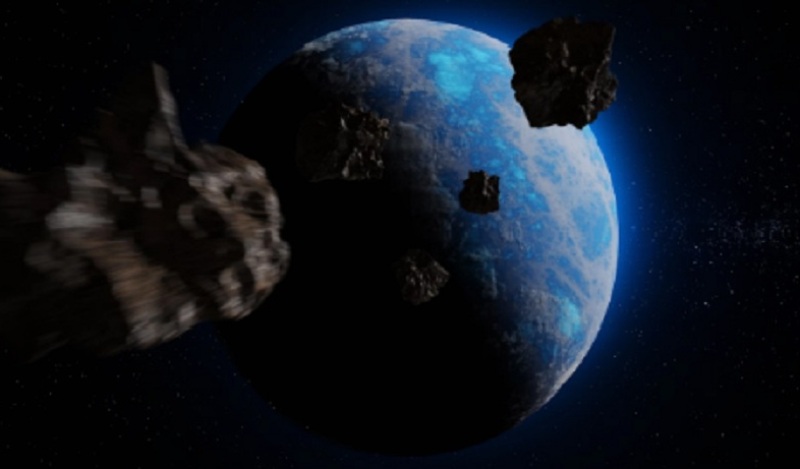NASA has announced that two massive tower-sized asteroids, Asteroid 2024 QG and Asteroid 2021 RA10, are set to pass Earth at terrifying speeds soon.
Asteroid 2021 RA10, which is 92 feet in diameter, will make its closest approach at a distance of 2.61 million kilometres on August 28.
It was discovered earlier, on September 9, 2021, by the Catalina Sky Survey based in Tucson, Arizona.
Meanwhile, asteroid 2024 QG is estimated to be about 130 feet in diameter. It is expected to make its closest approach to Earth on August 28 at a distance of approximately 640,000 miles (1,030,000 kilometres).
The asteroid was first discovered on August 15, 2024, by the Pan-STARRS1 telescope located at the Haleakalā Observatory in Hawaii.
NASA’s Jet Propulsion Laboratory (JPL) has been on alert as two massive asteroids along with three other asteroids are flying at a scary speed towards Earth.
Even though these space rocks are not likely to make an impact on the planet, their close flyby helps carry out scientific research.
Asteroid 2012 SX49, which is around the size of a house, has a diameter of 64 feet. It will flyby Earth on August 29 at a distance of 4.29 million kilometres.
Asteroid 2016 RJ20 is nearly 210 feet in diameter and will make a close flyby Earth on August 30 at a distance of 4,340,000 kilometres.
Meanwhile, another asteroid 2021 JT, which is nearly the size of a bus, measures around 38 feet wide. This asteroid will come close to Earth on September 1 at a distance of 3,890,000 kilometres.
NASA’s Jet Propulsion Laboratory in Pasadena, California, has been tracking these asteroids using the Goldstone Solar System Radar.
This radar system, part of NASA’s Deep Space Network, provides detailed observations of near-Earth objects (NEOs), allowing scientists to determine their size, shape, rotation, and surface properties.
The data collected from these observations are crucial for understanding the potential threat posed by these objects and for developing strategies to mitigate any future impact risks.
Even though many of the NEOs don’t come very close to Earth, some of them do come at a scary distance and get tagged as potentially hazardous asteroids which need more attention.
Near-Earth objects like 2024 QG and 2021 RA10 are remnants from the early solar system, and their trajectories can be influenced by gravitational interactions with planets and other celestial bodies.
ALSO READ: Chinese scientists find water molecules in Moon samples in groundbreaking discovery
While neither of these asteroids poses an immediate threat to Earth, their close approaches emphasize the need for vigilance in tracking such objects.
Notably, NASA has also increased its efforts to detect and track NEOs through initiatives like the Planetary Defense Coordination Office (PDCO).















